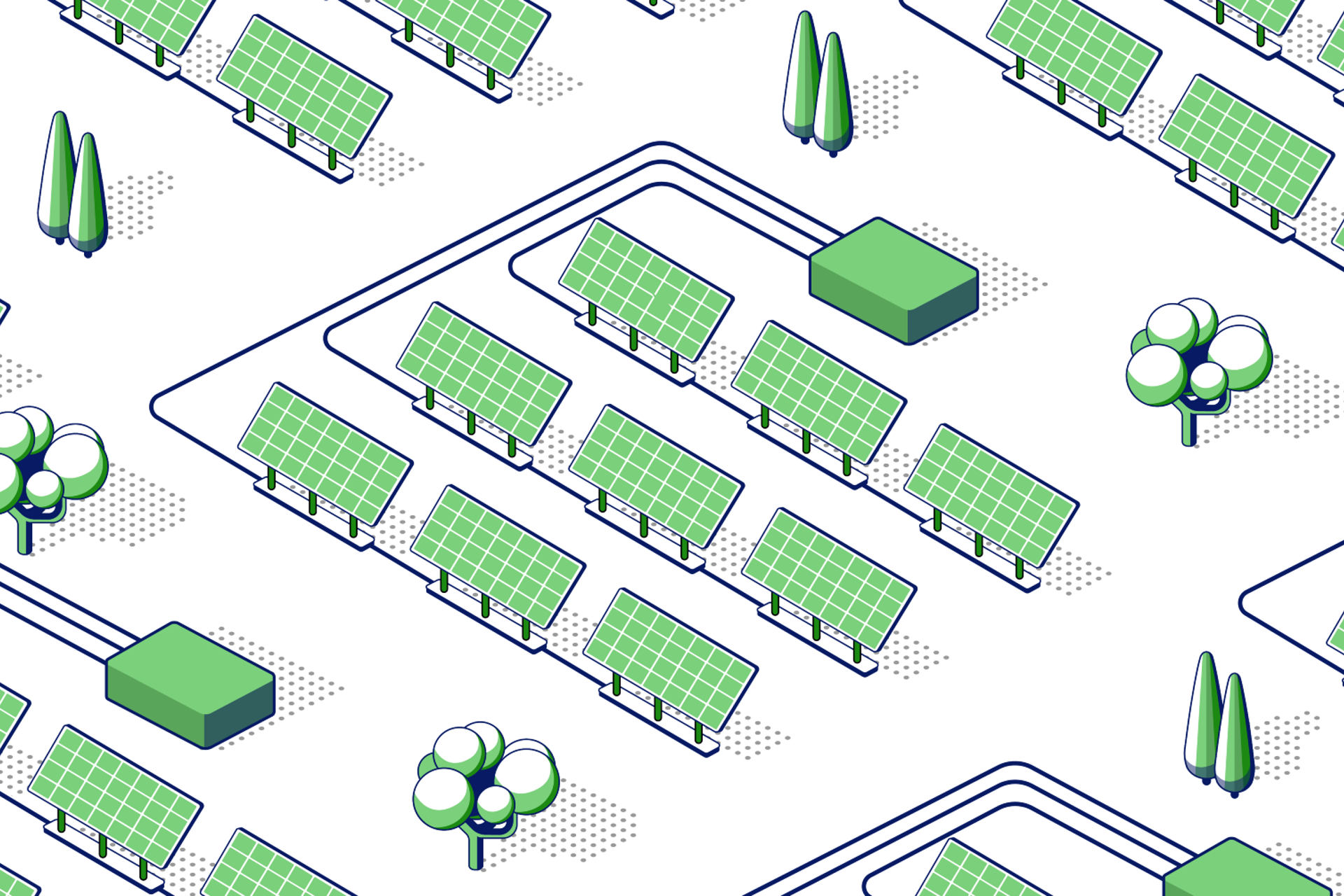Producing power: Solar generation in the UK
Given the typical weather in the UK, it comes as no surprise that wind contributes such a large part of the country’s renewable generation mix. Lesser known, however, is quite how significant a part solar photovoltaic (solar PV) already plays in the UK’s electricity system and the heightened role it will play as the switch to a renewable-powered future accelerates.
The UK currently has a total installed capacity of in excess of 13.47 GW of solar PV, and across 2020, UK solar resources generated 13.16 TWh. And that figure is expected to double by 2030. The trade association Solar Energy UK is even calling for this figure to be tripled as a means of most effectively engaging with our Net Zero targets.
Solar PV is a technology that’s continued to improve as a source of electricity generation – new developments in cell technology are making panels more efficient, and improved manufacturing processes are making it easier to produce them. As a result, the cost of panels has continued to drop, in conjunction with their increased efficiency as a source of power.

Powering the future
The penetration achieved by solar PV in the UK electricity market to date might seem surprising given how underwhelming our nation’s weather can be. But that would overlook several important facts in how solar power works.
Firstly, PV cells don’t need to be in direct sunlight – so the UK’s often cloudy skies aren’t in fact all bad news for solar power.
Secondly, other aspects of the UK climate perceived as less favourable can actually be beneficial for solar power. Rain, for example, acts to clear away dirt and dust that might impact the level of sunlight reaching the solar cells.
Defiantly, the UK’s temperate weather regime may also be to the advantage of solar generation, given that too high temperatures actually reduce the voltage a panel can generate and so lowers its efficiency.
Hot weather also increases the electrical resistance in circuits thereby making transfer of power less effective. Taken together, extremely hot weather may diminish solar panel efficiency by as much as 10%.
Turning generators into vendors
Compared with wind turbines, solar panels are also more convenient. Turbines represent massive feats of engineering that require substantial capital and resources to install, as well as ongoing operational demands.
Solar panels are, in contrast, easier to install. Solar PV manufacture and the technology itself continues to advance and so deliver a more affordable source of renewable electricity. The Energy Saving Trust estimates that solar installation for an average house now costs between £5,000 and £8,000.
The light weight of solar panels means that they may be added to residential and business rooftops without call for significant re-design and is a significant factor in their popularity as a retro-fit option. Indeed, around 1 million rooftops in the UK now have solar panels fitted - that’s an impressive 1 in 25 buildings.
For organisations with excess rooftop space or unused land, solar PV installations offer the potential not just as a source of renewable electricity to replace units bought in, but also a source of revenue for any excess generated. This can be accommodated through entering a Power Purchase Agreement (PPA).
Electricity suppliers such as Drax offer a fixed price in exchange for any excess power (that’s power not used for your own purposes). A PPA therefore provides an independent generator the means to realise additional revenue and achieve price certainty in the process, and at the same time further drive the growth of the UK’s green power infrastructure.
Looking for a partner?
Drax has a long history in supporting independent renewable power generators in the UK and we support more than 2,300 renewable generators. Of these, over 1,200 are solar generators, a total capacity of nearly 260 MW.
Drax is therefore well-placed to offer a PPA that’s right for you – not just for solar but other technologies too.
To understand how you can use your own generating capacity to help support the future of solar power in the UK, get in touch today, or download our guide to PPAs below.
Download PPA Guide

